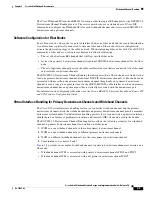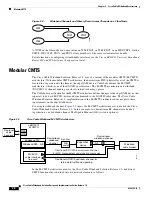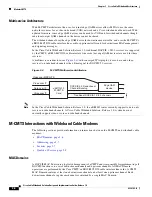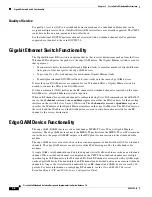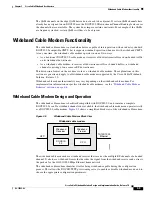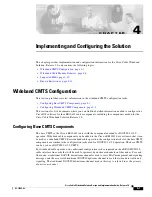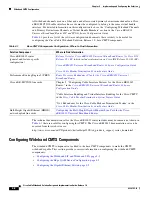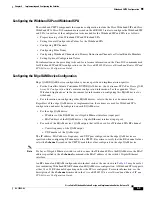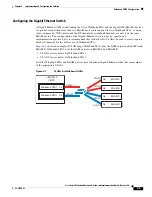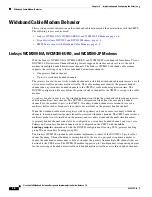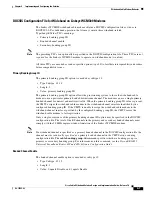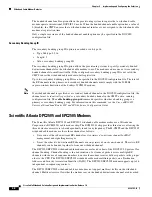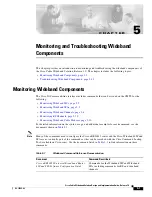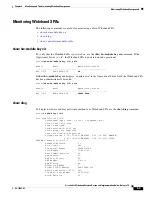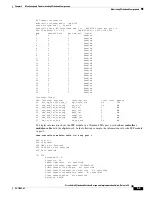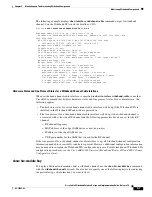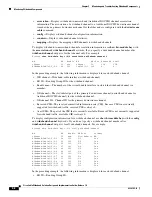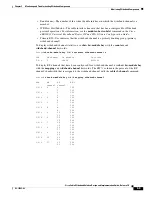
4-6
Cisco Cable Wideband Solution Design and Implementation Guide, Release 1.0
OL-10705-02
Chapter 4 Implementing and Configuring the Solution
Wideband Cable Modem Behavior
Wideband Cable Modem Behavior
This section provides information on the wideband cable modems and their interactions with the CMTS.
The following topics are discussed:
•
Linksys WCM300-NA, WCM300-EURO, and WCM300-JP Modems, page 4-6
•
Scientific Atlanta DPC2505 and EPC2505 Modems, page 4-8
•
CMTS Interactions with Wideband Cable Modems, page 4-9
Linksys WCM300-NA, WCM300-EURO, and WCM300-JP Modems
With the Linksys WCM300-NA, WCM300-EURO, and WCM300-JP wideband cable modems, Cisco’s
DOCSIS 3.0 Downstream Channel Bonding feature supports downstream data service to the cable
modem on multiple bonded downstream channels. The Linksys WCM300 wideband cable modem
supports the receiving of up to three wideband downstream channels:
•
One primary bonded channel
•
Up to two secondary bonded channels
The
primary bonded channel
is the wideband channel on which the wideband cable modem receives all
of its unicast traffic and some multicast traffic. The cable modem may identify the primary bonded
channel and any secondary bonded channels to the CMTS at cable modem registration time. The
DOCSIS configuration file may define the primary bonded channel for the CMTS to assign to the cable
modem.
Secondary bonded channels
are the wideband channels on which the wideband cable modem receives
additional multicast data streams. The DOCSIS configuration file defines the secondary bonded
channels for the modem to pass to the CMTS. Secondary bonded channels are intended to receive
multicast traffic such as broadcast video that is not available on the primary bonded channel.
When the wideband cable modem registers with one primary and one or more secondary wideband
channels, it accepts multicast packets from all associated wideband channels. The CMTS ensures that a
multicast packet is not forwarded on the primary and secondary wideband channels simultaneously.
A primary bonded channel cannot also be configured as a secondary bonded channel, and vice-versa.
Primary and secondary bonded channels can be configured on the CMTS with the
cable
bonding-group-id
command and with the DOCSIS configuration file using TLVs (primary bonding
group ID and secondary bonding group ID).
The Linksys WCM300 wideband cable modem implements a subset of the DOCSIS 3.0 protocol for
channel bonding. Channel bonding is accomplished by the use of a per-packet sequence number to
enable the wideband cable modem to deliver, in order, the packets from multiple RF channels that are
destined to the CPE device. The WCM300 modem supports up to 16 independent resequencing engines
for the receiving of bonded unicast traffic and bonded multicast traffic over its three bonded channels.


